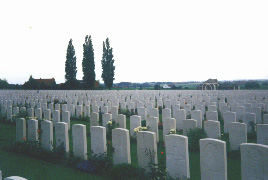

PLAYERS NOTE: This page is provided to give you an idea of how I determine the combat results, and what the various odds of things happening are. All Die rolls involved are made by the GM.
| CLEAR WEATHER: |
| Air missions: Yes |
| INF: Yes |
| ARM: Yes |
| CLOUDY WEATHER: |
| Air missions: NO |
| INF/CAV: Yes |
| ARM: Yes |
| Naval Units: Yes |
| RAINY WEATHER: |
| Air Missions: NO |
| INF/CAV: Yes |
| ARM: NO |
| Submarines: NO |
| All other Naval Units: Yes |
| WINTER: |
| Air Missions: YES |
| INF/CAV: Yes |
| ARM: NO |
| Submarines: Yes |
| All other Naval Units: Yes |
| SEVERE WINTER: |
| Air Missions: NO |
| INF/CAV: Yes |
| ARM: NO |
| Submarines: NO |
| All other Naval Units: Yes |

Explaination of Table:
First, I take how many troops you have committed to a battle and figure out the attacker/defender ratio, then I look at the base chart, add in attacker's modifiers, and subtract the defender's modifiers. I then roll a 10 sided die(1D10) and consult the combat table for the casualties inflicted on the attacker. Then I do the same for the defender. The percentages generated are the percentage of the attacker's numbers that are inflicted as casualties on the defender and vice versa.
If the defender suffers more casualties than the attacker, then the defender retreats and the attacker advances. A Rout will occur if the difference in attacker to defender casualties is greater than 5-1.
Half of all causalites suffered by each side are killed, the other half wounded. After 6 months you receive 50% of your wounded back as reinforements, unless Gas was used in the attack, then the side it effected recieves only 25% back as reinforcemnts.
If two sides order their forces to attack each other there is no defender. Each side is calculated using the attacker tables and attacker modifiers.
If a nation attacks in the same turn it declares war, it gets the benefit of 'surprise' attack that turn only.
Poison Gas was somwhat unpredictable when it was used. The wind could change at any given moment, friendly troops might accidentaly walk into it, and so forth. To simulate this, whenever you use Poison Gas in combat I will roll a 6 sided die (1D6). On a roll of 1-3 it works as expected and only effects the enemy. On a 4-5 it effects both of you and on a 6 it effects only you.(watch the wind!!)
| DIE ROLL | EFFECT |
| 1-3 | Effects Target Side |
| 4-5 | Effects Both Sides |
| 6 | Effects Side Using |

NAVAL COMBAT
Each week of game play, when opposing naval forces are in the same sea area, there is a 25% chance (on 1D100) that they will encounter each other by accident.
If an encounter occurs, I will roll a six sided die (1D6). On a roll of 1-3 the side with the higher search roll (from above) gets the advantage in battle, on a 4-5 the lower side does, and on a 6 no one does (free for all grand melee).
I will determine if it is day or night battle by rolling a six sided die(1d6). On a roll of 1-5 it is day action. On a 6, it is a night action.
If you are trying to run a blockade, there is a 80% chance on a (1D100) that there will be naval combat.
| SEARCH MODIFERS | |
| RAIN | -5% |
| WINTER | -10% |
| SEVERE WINTER | -15% |
| FRIENDLY SUBMARINES IN AREA | +5% |
| OBSERVERS/ZEPPELINS IN AREA | +5% |
| INTELLIGENCE (from spy or other source) | +10% |
| NON-NATIVE WATERS* | -5% |
| * = Example: Japanese Warships in the Atlantic |
NAVAL COMBAT TABLE
| SHIP TYPE | FIREPOWER |
| Dreadnaught | 7 |
| Battleship | 4 |
| Cruiser | 3 |
| Destroyer | 1 |
| Aircraft Carrier | 2 |
| Minelayer/Minesweeper | 0.5 |
| Merchant Marine Fleet | 0 |

Explaination:
Round1:
Each side's fighters engange each other first. I take the number of attacking and defending fighters which combat each other, and consult the combat chart. After this round, fighters then engage each other's Zepplins, Bombers and Observers using the same table. Round2:
After this, any Bombers, Observers, or Zepplins which survive continue their mission. (bomb enemy, bomb factory, observe, etc.)
NOTE: To get the bonus Observers give to ground combat and artillery bombardment, your Observers must have gotten through without being intercepted by enemy fighters or your fighters shot down all of the enmy fighters down in the first round. (round1)

Explaination:
If Zeppelins make it to their target, after any air combat has been resolved, those that clear through may bomb enemy economic targets. You get one roll (1D10)on the table for every 10 Zeppelins.
Paris Guns may bombard economic targets. You get one roll minus one (1D10-1)on the table for every 10 Paris Guns.
Naval Units may bombard Economic Targets.
Battleships get on roll on the table for every 2 ships. Cruisers
get one roll minus 1(1D10-1)for every 10 and Destroyers get one
roll minus 3 (1D10-3) for every 20.
